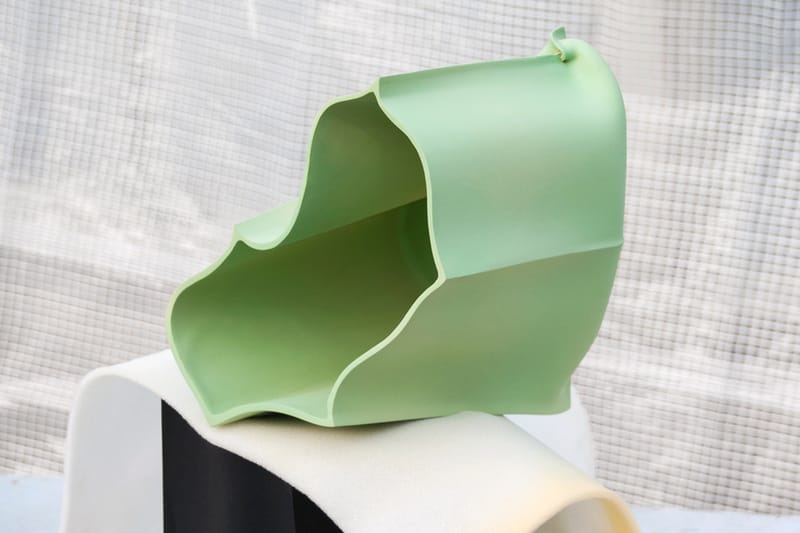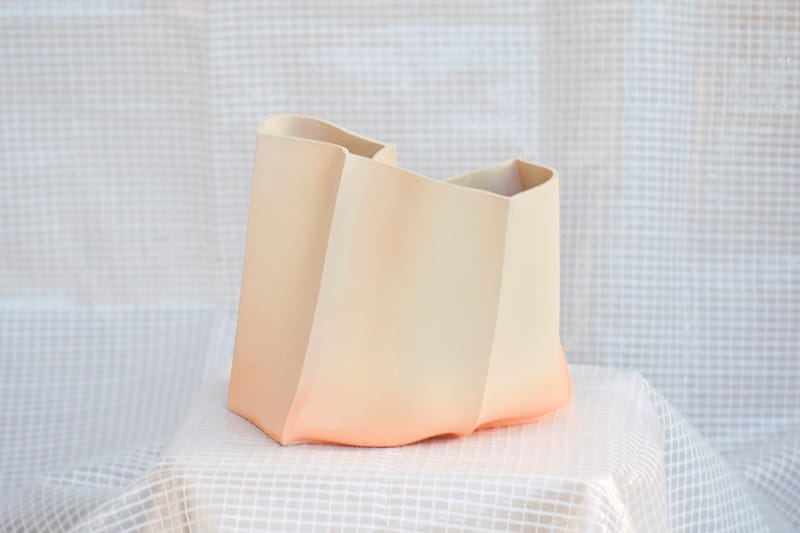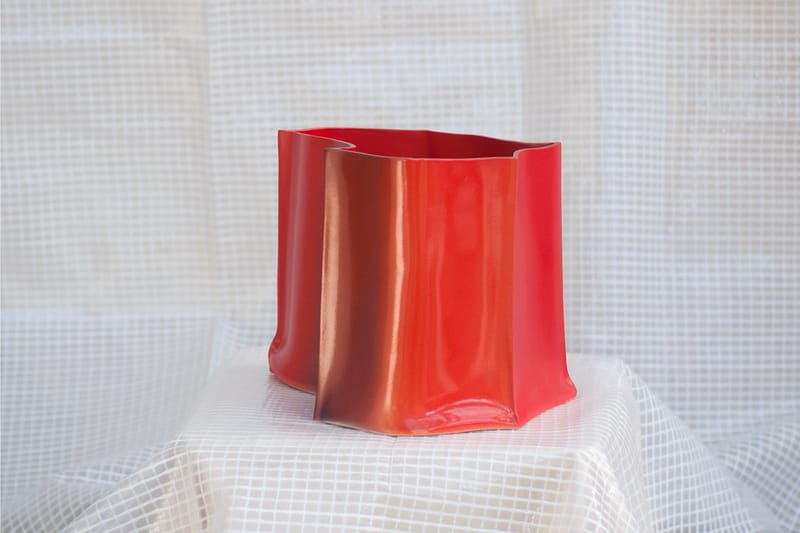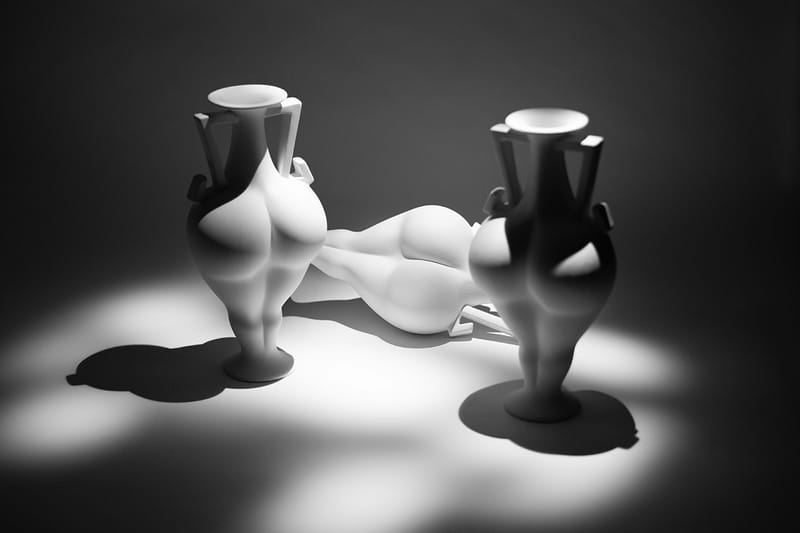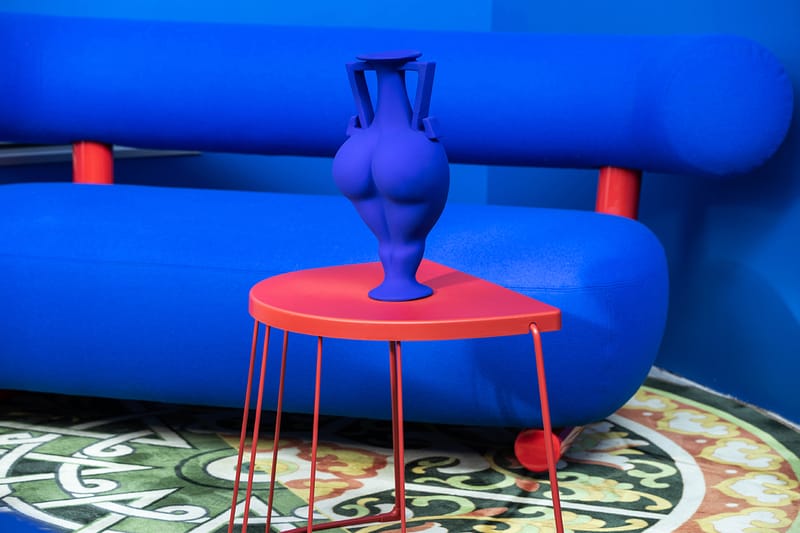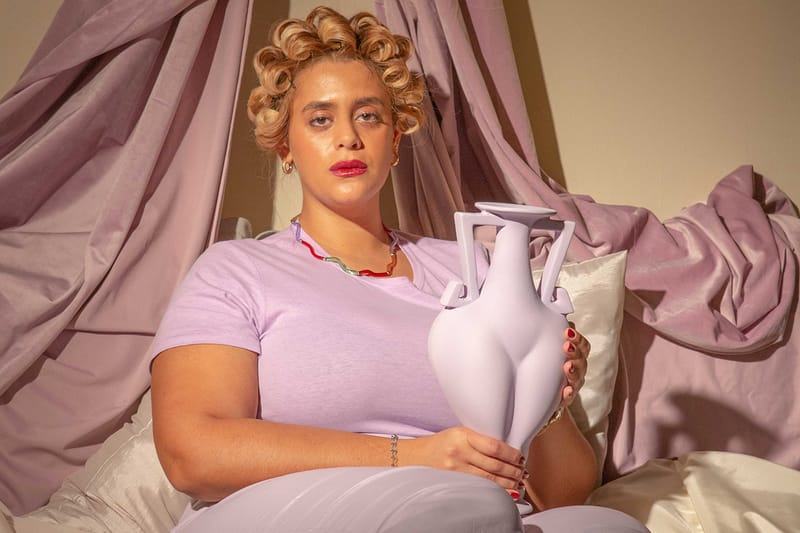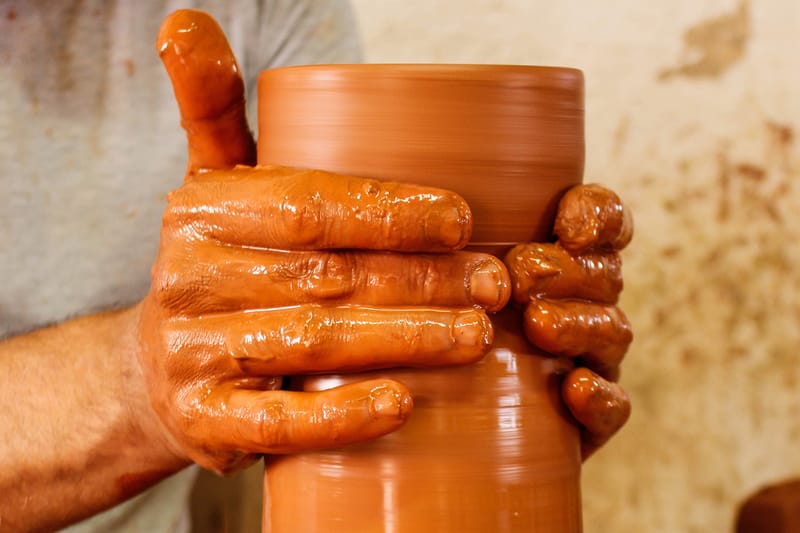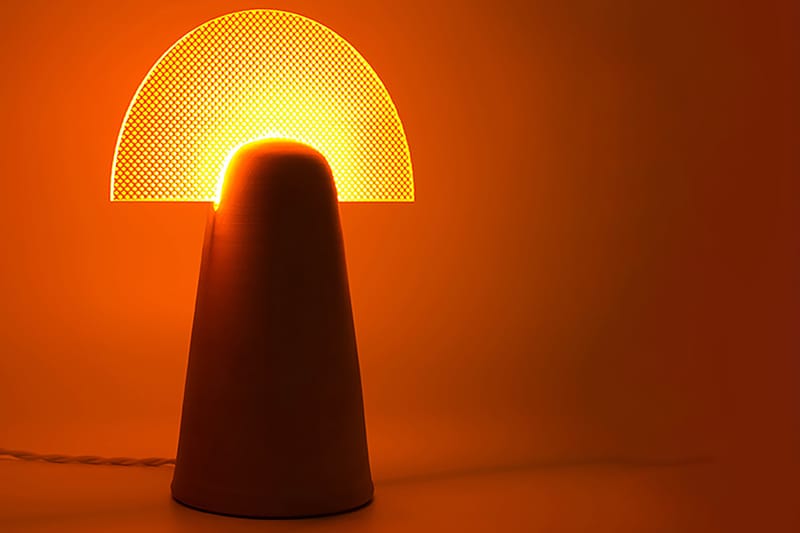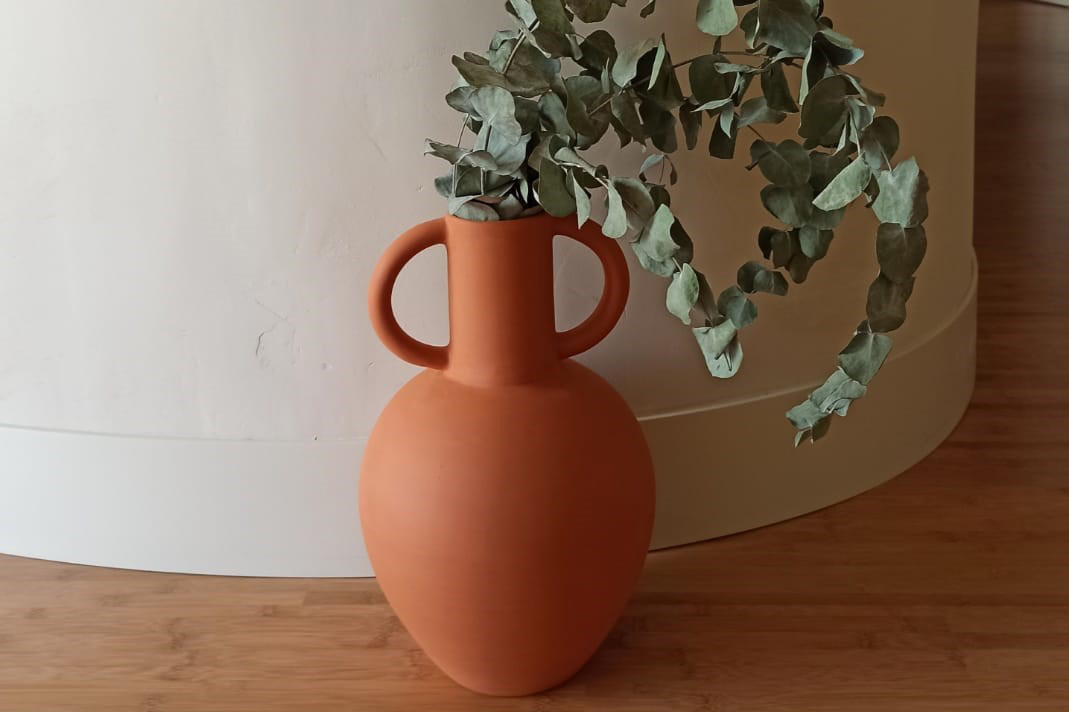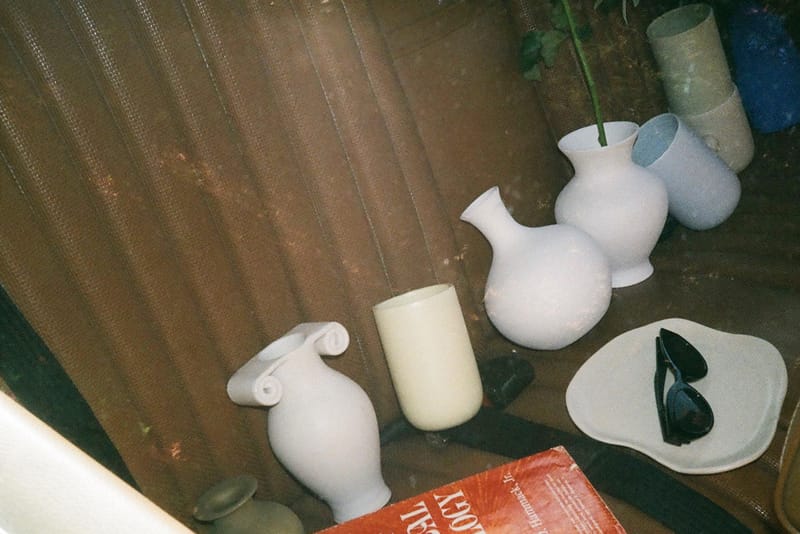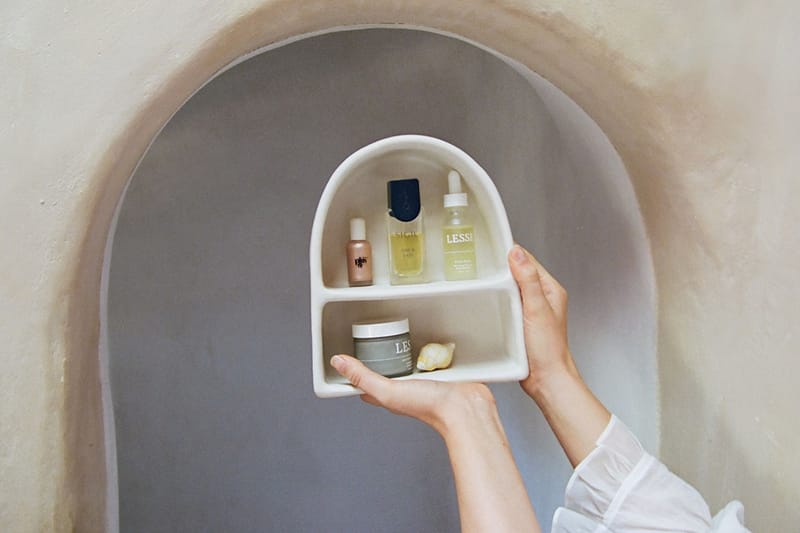In season eight, episode 10 of Bob’s Burgers, “The Secret Ceramics Room of Secrets,” the kids set out to find a clandestine closet filled with ceramics which, according to an urban legend, has been kept hidden in their school. As a kid, there’s a moment when our art teacher lets us progress from paint-by-numbers to explore the world of clay, and with that comes a rite of passage, of sorts — we’ve been accepted into understanding the mysterious ways clay works. There’s an inherent contradiction to working with clay — it’s a primitive experience that we are taught from childhood, but it’s a skill that takes a lifetime to master.
As Philipp Schenk-Mischke, the founder of the ceramics brand Paradise Editions, puts it, “a ceramicist never tells their secrets,” but there’s a lack of self-serious to the practice, too — in fact, much like when we played with clay as a kid, even some of the best ceramicists are throwing it until they make it.
1 of 4
Photos by Marta Fernandez Canut For Philipp Schenk-Mischke, Paradise Editions2 of 4
Photos by Marta Fernandez Canut For Philipp Schenk-Mischke, Paradise Editions3 of 4
Photos by Marta Fernandez Canut For Philipp Schenk-Mischke, Paradise Editions4 of 4
Photos by Marta Fernandez Canut For Philipp Schenk-Mischke, Paradise Editions
There’s also something quite beautiful about the perfectly-imperfect nature of ceramics. “Ceramics have something very human [about them]. The raw touch, the way the light comes through, they can become very natural,” says Stephanie Blanchard and Nicolau dos Santos of IAMMI Studio. Schenk-Mischke echoes that, adding “[Ceramics are] handmade by default… They transport the handwriting of the maker.”
Because of this, ceramics serve as more than just a vessel. The human and natural instincts embedded within the structure of ceramics can help provide us with the much-need human touch many are longing for right now. For example, IAMMI is renowned for its “B-Fora” vase, which takes inspiration from Greek artforms and, as the studio puts it, “the canonical female body of Kim Kardashian.” In fact, this celebration of the female body even lead one customer to tell IAMMI about his relationship with women: “he was sad and scared to communicate with women because he didn’t feel comfortable in his body, and he said when he saw the design that if he can have this vase, maybe he can have a woman like this in his life,” explains Blanchard.1 of 4
Iammi Studio2 of 4
Iammi Studio3 of 4
Iammi Studio4 of 4
Iammi Studio
Vases such as “B-Fora” exude power, but ceramics as a whole are a means for feeling something. Whether it’s IAMMI communicating ideas of the strength of women and body positivity or makers such as Inma Peroli finding ways to “bring more truth to our lives,” vases have become a new way for us to connect with ourselves and the world around us. Peroli adds, “The buyer now demands not only design and beautiful products, but also sustainable objects with identity and human value. After decades of industrial products [that are] impersonal and disrespectful to the planet, ceramics, artisans and local manufacturing has emerged stronger to give us what we need as a society.” Rachel Saunders agrees: “As a collective, we are going back to the basics in many ways. We long to return to what we once knew, and we see it through trends like making your own sourdough, repurposing patchwork quilts, [and] the rise of ceramics.”
The artform of ceramics is thousands of years old and is intrinsically planted into so much that we know today. Without ceramics, we wouldn’t have half the functional objects we take for granted, or the tools that built the world we live in. Going back to a simpler time when ceramics were all we knew has given us the space to feel something again — it’s similar to many other things the pandemic has done for us, such as making us reconnect with ourselves, lessen our screentime, and so on. With that in mind, many of the artists mentioned here feel that the resurgence of ceramics is a much-needed reset. 1 of 4
Inma Peroli2 of 4
Inma Peroli3 of 4
Inma Peroli4 of 4
Inma Peroli
If lockdown has taught us anything, it’s that we need to take some time for ourselves. Saunders’ work reflects this, specifically pieces such as her “Phone Home” concept. As she puts it, “Phone Home” is “A dome-shaped vessel to enact intentional boundaries between you and your tech. It’s designed to echo your alarm so you can keep it outside of your bedroom, and has a little hole in the back for your charger to go through. It offers a space of rest and separation for your phone, so that you can have a conscious relationship with it throughout the day. And yes, you could just put your phone in a sock drawer, but with something like this, a handmade, small-batch object made from the earth, it acts as a symbol of intention and awareness and provides a sense of warmth to the mundanity of life.”
Ceramics offer a sense of familiarity, calm, and according to these four ceramists, humanity. “In a time of search for peace, identity and truth, I believe that ceramics give us the relaxed warmth in homes we need so much today. Furthermore, as designers and consumers, I believe we must be aware of the necessity to consume materials that are sustainable and low-polluting such as clay,” says Peroli.
We have a very natural relationship with clay, from being an ancient crafting material to the process itself. For example, Schenk-Mischke creates his pieces using a body vibration plate he bought from Amazon (the same one that is supposed to help people lose weight), while Saunders notes how she first came across the medium: “I would spend weeks on a hyper-realistic pencil drawing just to burn it after. It felt useless to me. I was always drawn to art that could be engaged with, that could be touched and held… But there has also been a very natural relationship between me and clay, and when I first touched it my hands seemed to have a remembering of what to do.” But what’s more interesting above all else is the way we interact with ceramics in our daily lives. 1 of 4
Rachel Saunders2 of 4
Rachel Saunders3 of 4
Rachel Saunders4 of 4
Rachel Saunders
Regardless of the presumed function (teacup, bowl, figurine), many of us naturally convert ceramics into a vase of sorts. And there may be a reason for this: our natural connection to ceramics. Like plants, ceramics tell a story of life, one which Blanchard reminisces of during her time spent in Sweden. She says, “I have plants in my apartment, but they had a forest. I asked why they have all these plants, they told me it’s because there’s not much light in Sweden in the winter… so they need life in their houses. We need to communicate with something that’s breathing, otherwise, we’re depressed. I think it’s the same thing with ceramics because it’s so natural, it’s a material that lets you speak with it, you don’t feel alone. It reminds us of our roots.”
At a time when many are feeling alone, ceramics are here to support us. All of the artists here found ceramics through exploration, trial and error, and a passion for doing something that feels organic — so next time you pick up a pencil and start doodling, think twice and play with some clay instead.
Source: Read Full Article

